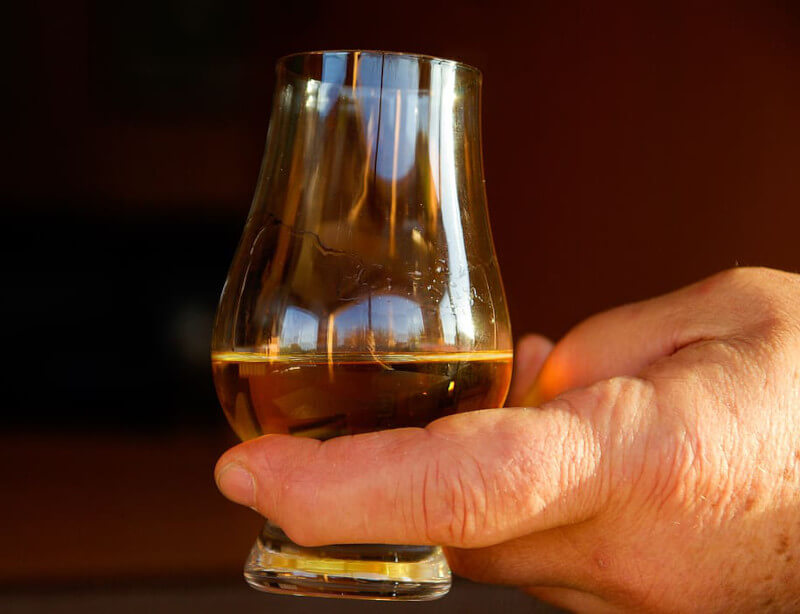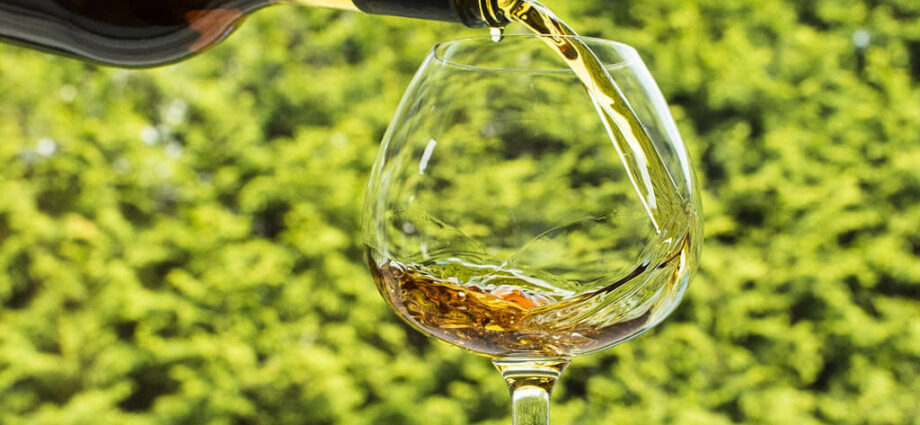Have you ever gently swirled a glass of whisky and watched as trails formed on the inside? Often called ‘legs’, these trails might seem inconsequential, but they tell a story about the whisky you’re about to sip.
More Than Meets The Eye
When assessing whisky, it’s not just about the aroma and flavor. Your eyes can be powerful tools in understanding a whisky’s character. The hue of the liquid, for instance, can hint at the type of oak cask used. A mahogany shade typically suggests ex-Sherry casks, whereas a lustrous gold points towards ex-Bourbon barrels. A lighter shade in a well-aged whisky hints at limited interaction, perhaps due to a refill cask.
Unraveling the ‘Legs’ Mystery
Upon swirling, some whisky sticks to the glass and slowly descends, forming what many refer to as ‘legs’ or ‘tears’. This phenomenon is largely due to alcohol’s lower surface tension compared to water. With agitation, the liquid covers the glass, and since alcohol evaporates faster than water, its proportion decreases.
Consequently, the water’s increased surface tension pulls some whisky upwards. Over time, this coalesces and trickles down, creating those captivating ‘legs’. James Thomson, a physicist from Glasgow, first addressed this in 1855. It’s now termed the Marangoni Effect, describing fluid flow caused by variations in surface tension.
What do ‘Legs’ Indicate?

The behavior of these ‘legs’ isn’t just mesmerizing; they’re indicative of whisky’s character. The speed and thickness of their descent can reveal:
- Strength:The rate at which the ‘legs’ travel down the side of the glass can be a telltale sign of the whisky’s alcohol content. But how does this work?
The underlying principle lies in the evaporative nature of alcohol. Alcohol molecules are lighter and more volatile than water molecules. When swirled, the alcohol’s quicker evaporation results in a thinner film, causing the ‘legs’ to move more swiftly for higher-strength whiskies. Conversely, whiskies with a lower alcohol content tend to have a denser film, resulting in slower, more languid legs.
The intricate dance of these legs offers an unspoken clue about what to expect when sipping. Higher-strength whiskies might offer a more intense burst of flavors, while those with a gentler alcohol content often come across as smoother and more mellow.
- Spirit Character:While whisky primarily comprises water and alcohol, it’s the other constituents, like oak extracts and natural oils, that impart unique flavors and aromas. These components influence the behavior of the ‘legs’.
The casks used during the maturation process release compounds like tannins, lignin, and lactones into the whisky. This not only affects flavor but also impacts the weight and texture of the liquid. Whiskies matured in casks with a higher oak influence will often have ‘legs’ that are thicker and move at a different pace, indicating a potentially richer and more robust flavor profile.
On the molecular level, these oak compounds increase the whisky’s overall density, leading to more viscous legs. A whisky enthusiast might correlate these thicker legs with a fuller-bodied taste, expecting notes of vanilla, caramel, or even toasted wood, all thanks to the oak’s influence.
- Interaction Level:
The ‘legs’ can hint at how much the whisky has interacted over time. As a simple rule of thumb, faster-moving legs equate to a lighter mouthfeel, while thicker, slower legs suggest a richer experience.’Legs’ also whisper secrets about a whisky’s age and its interaction with the cask. Over time, whisky undergoes evaporation, leading to the loss of both water and alcohol. This process, often affectionately termed the “angel’s share,” can change the liquid’s composition.A whisky that has seen more years will likely have interacted more with its cask, undergone more evaporation, and, in turn, will display ‘legs’ that behave differently. While age might be the first thought, it’s essential to understand that it’s not just about time but the quality of that time. Factors like the type of cask, its previous use, and even where it was stored in the warehouse play a part.
For instance, a whisky matured in a coastal environment might have a slightly saltier character due to the ambient sea air. This interaction changes the liquid’s composition, and these nuances might be subtly reflected in the behavior of its ‘legs’.
The Eyes Have It: Other Visual Tests
- Beading: By shaking a sealed whisky bottle, you might see a ring of bubbles forming. Alternatively, cover your whisky glass, give it a good shake, and look for the same. Longer-lasting beads imply a higher alcohol content. Oak extracts can also influence beading, offering a dual reading of the cask effect and strength.
- Viscometry: Ever noticed swirls forming when water’s added to whisky? Termed as viscometric whorls, there is yet another telltale sign. The persistence of these swirls can indicate the whisky’s strength and mouthfeel. While the science is still debated, some claim that mature grain whisky showcases lower viscometric levels than single malt. Furthermore, anecdotal evidence suggests Japanese whiskies generally have less viscometry than their Scotch counterparts.
Interestingly, there’s a quirky observation: in the southern hemisphere, these whorls reportedly rotate counter-clockwise. Still, this needs more verification.
Making Sense of It All
Sir Malcolm Walker, a master distiller with over 30 years of experience, once remarked, “Observing the legs in a whisky is akin to understanding its soul without uttering a word.” He believed that understanding these patterns not only enhanced the tasting experience but also connected the taster with the creation process.
Another example comes from a tasting event in Edinburgh. Attendees, initially oblivious to the ‘legs’ concept, became entranced upon realization. One guest commented, “It’s like I’ve been reading books all my life but just discovered chapters.” While ‘legs’ might seem like a whimsical aspect of whisky tasting, they’re steeped in science and tradition, making each sip an intersection of past wisdom and present discovery.
Whisky, with its rich history and intricate crafting process, continually invites enthusiasts to look beyond the obvious. The ‘legs’ phenomenon, a dance of liquid on the glass walls, is just another chapter in this endless fascination. It’s a visual spectacle that not only entertains but educates, offering glimpses into the very essence of the drink we’re about to enjoy. From the subtle nuances of strength, and character, to interaction, these fleeting trails are like silent narrators, chronicling tales of cask influence, maturation processes, and the delicate balance of elements within.
For those who cherish every drop of their whisky, understanding the ‘legs’ adds another dimension to their appreciation. It reinforces the idea that enjoying whisky is a multi-sensory experience, where even the visuals communicate layers of information.

